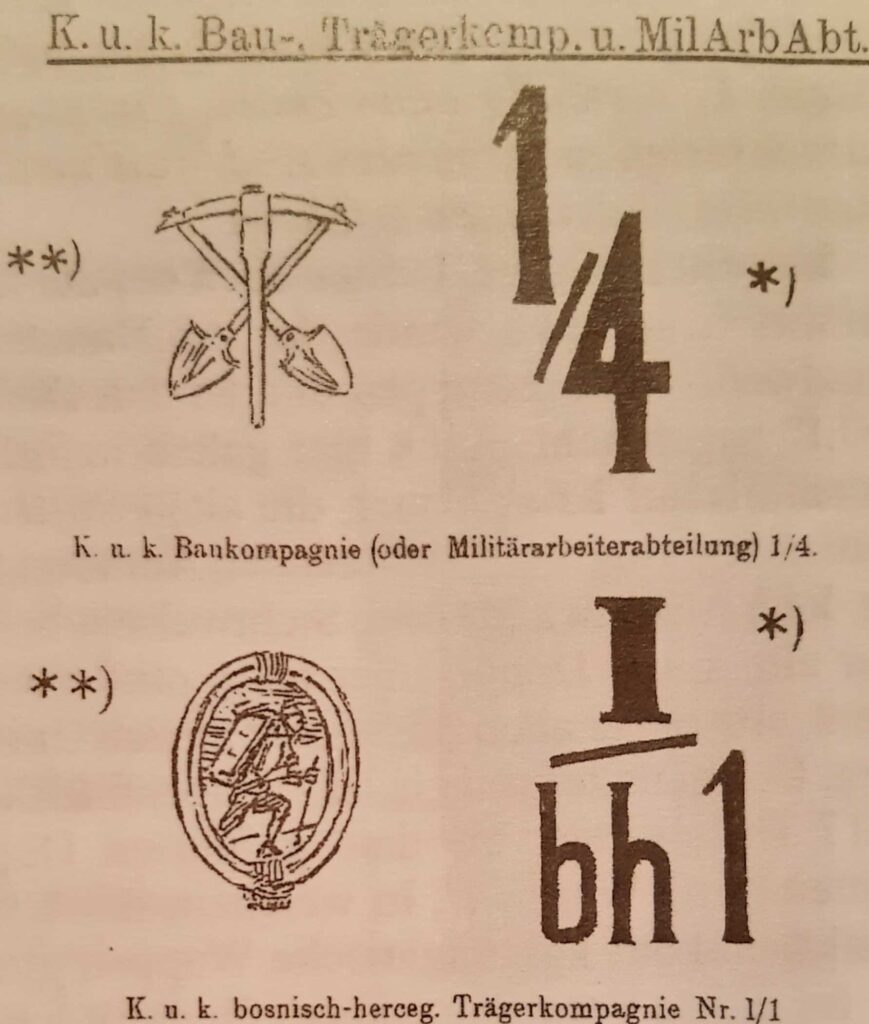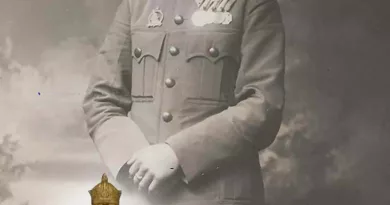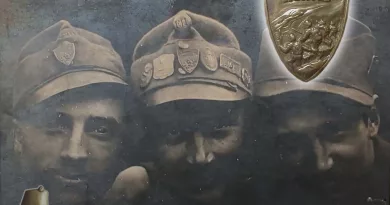Textile troop insigna
In this post we will be talking about cap badges, but not the artistic metal badges first associated by everyone, but a much simpler design, systematized canvas (textile) signs introduced for practical reasons. I myself think these also belong to the wider family of cap badges.
In the army of the monarchy, the numbering of the formations also appeared on the regular headgear. The regiment number was marked on the right side of both the infantry and cavalry field caps. In the case of the blue cap of the infantry red cloth, for the red field cap of cavalry yellow letters indicated the soldier’s formation. The soldiers of the ranger battalions could be distinguished by the number appearing on the badge of the metal horn affixed to the left side of the hunting hat. In the case of the lancer and hussar regiments, the formation was marked by numbers made of gold-colored sheet metal in the middle of the pike coat of arms, and in the case of the Honvéd Hussar regiments by gold letters on the left side of the shako. On the cap coat of arms of the artillery regiments, the number of the regiment was displayed between the claws of the two-headed eagle. The following picture depicts the shako insignia of the 16th hussar regiment.
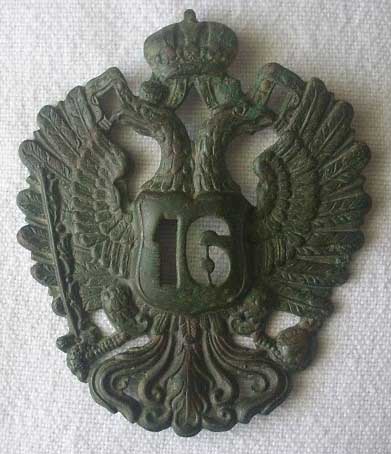
In the army of the Monarchy, after the pike gray, a greener shade of camp gray uniforms was introduced. With this, the possibility of immediate visual distinction provided by the colorful garments characteristic of the individual weapons, formations and special troops until then disappeared. In infantry, for example, colored collar flaps and numbered buttons provided the clues to express a soldier’s organizational affiliation. Of the former, only one 18 mm wide strip of cloth remained, which was sewn in place of the end of the original flap, but only until the stock of material still available was exhausted. Within the army, it became necessary to introduce a new system, both to express identification of troops in the homogenized clothing – and to express the affiliation of those serving in the same formation. In 1916, troop insignia were introduced, printed on waxed canvas for the crew, and sewn or embroidered on posts for non-commissioned officers and officers. In many cases (presumably due to lack of material) the designation of the corps was sewn / embroidered simply on the material of the field cap.
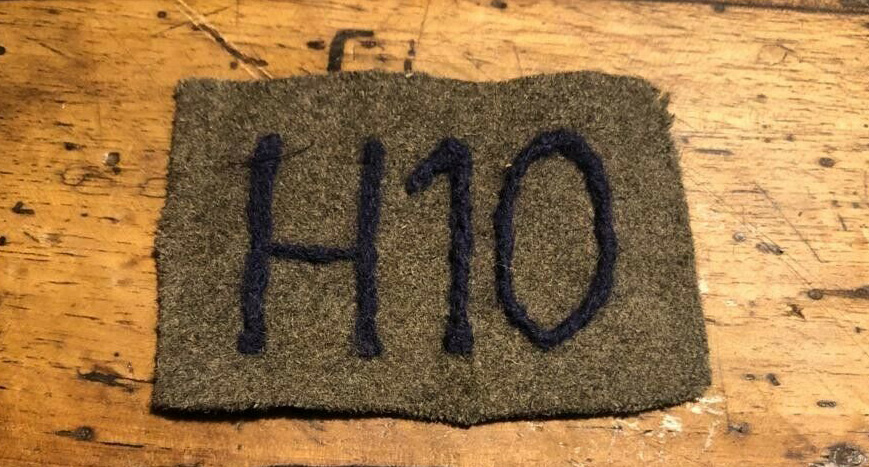
The letters of units of the common army were blue, the Landwehr units were green, the soldiers of the Hungarian Royal Honvéd were slate gray, imperial Landsturm troops were red, while the Hungarian insurgents were given white letters, numbers and signs to distinguish their units. In the case of officers, the markings were affixed exclusively to the left side of the field cap, and in the case of the crew, in addition to the cap, to the shoulder strap of the jacket.
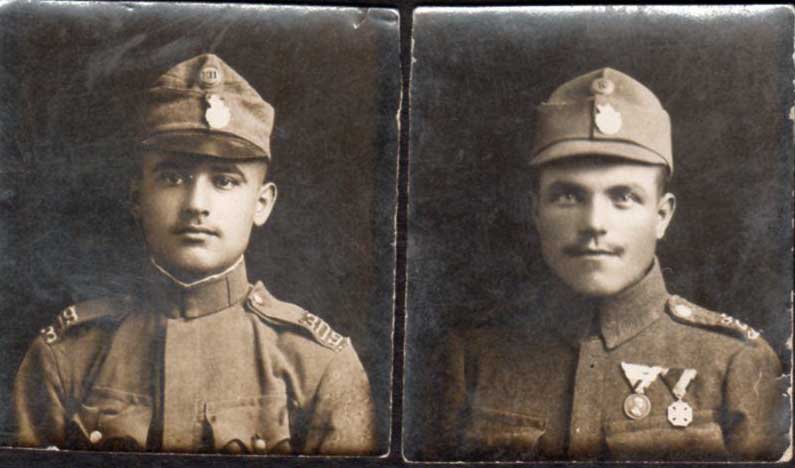
The letters had to be fixed 10 mm above the bottom cap edge on the field cap and on the shoulder straps in such a way that the inscription was read from the front and their outer edge was cut off by the shoulder sewing.

The developed system helped to provide a precise distinction between the individual formations. For example, in the case of artillery, the artillery badge with a Roman numeral meant an artillery regiment, with an underlined Roman numeral howitzer regiment, and a heavy artillery regiment was marked with a number underlined twice. A framed and diagonally crossed number meant mounted artillery division. In the case of Hungarian formations, the military order number preceded the letter or pictogram signs. For Croatian command language formations, abbreviations of the corresponding Croatian words were used.
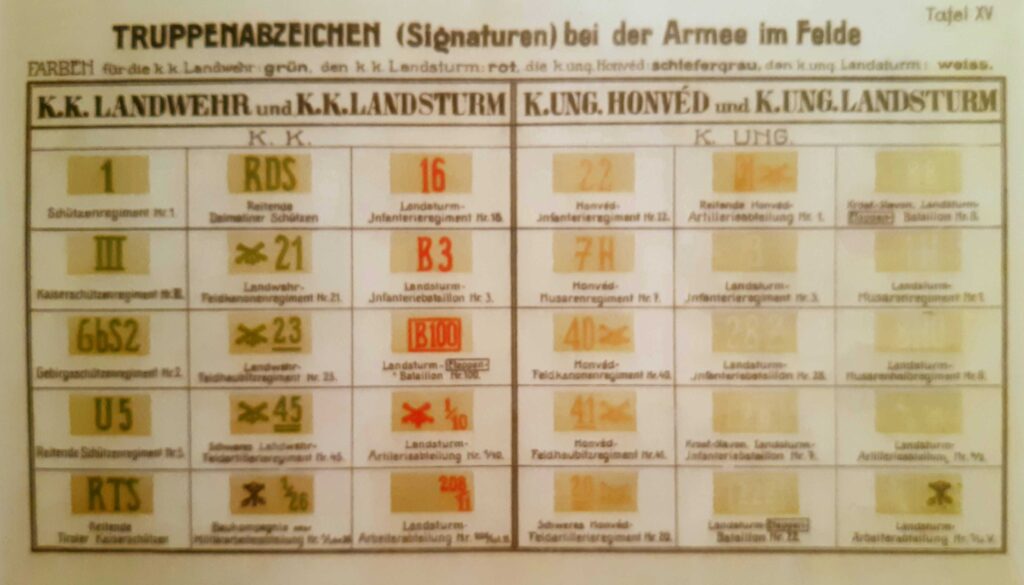
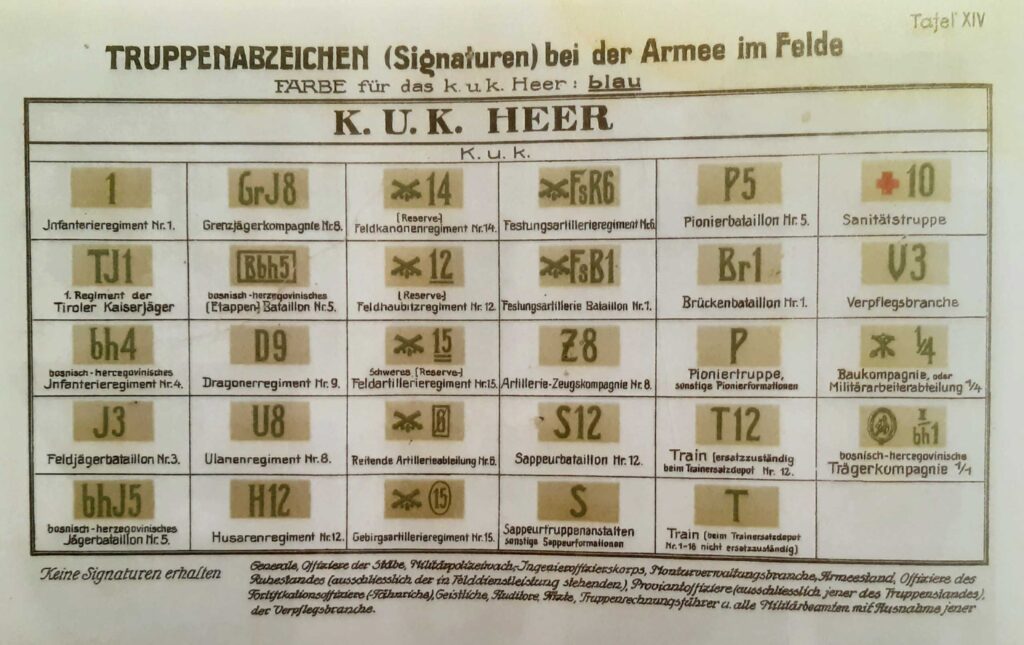
Of the new metal weapon insignia that appeared later, the insignia of the construction worker and the load-bearing troops were one by one the same as the pictograms used on the waxed canvas insignia.
